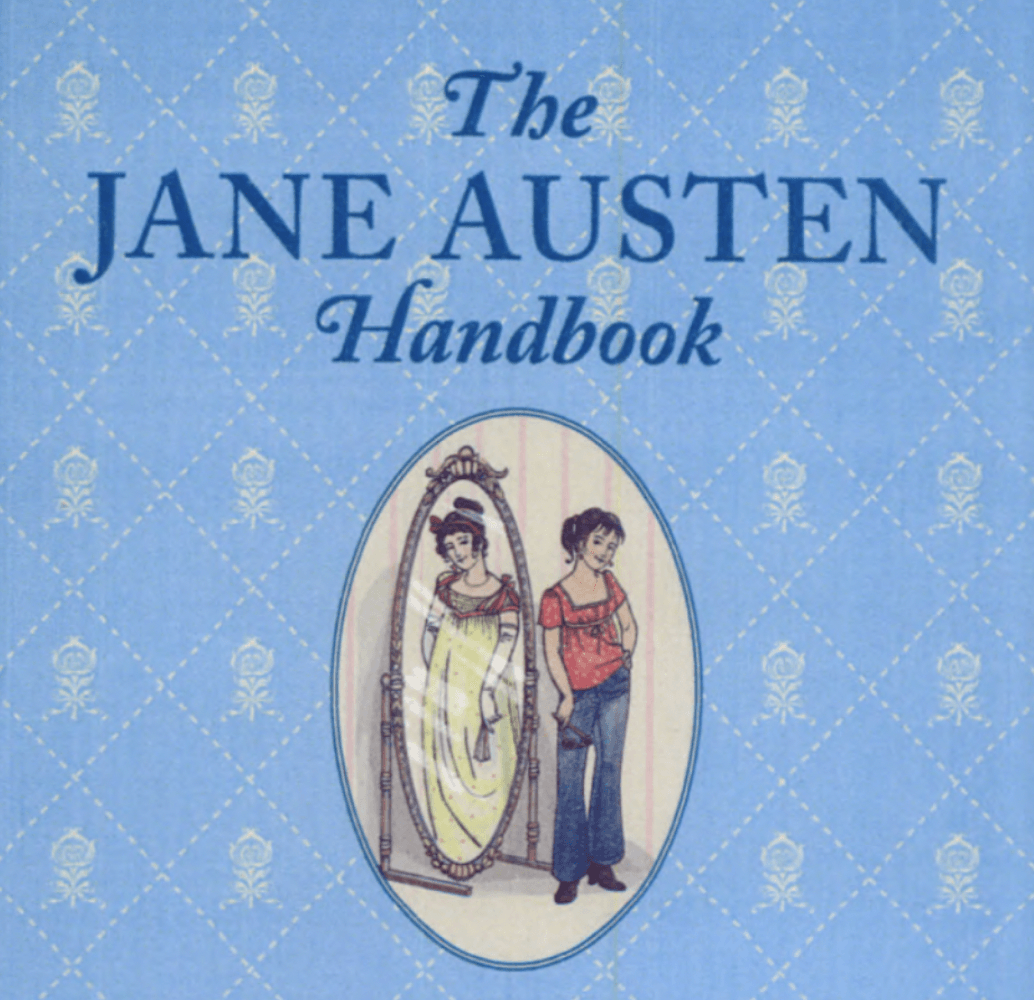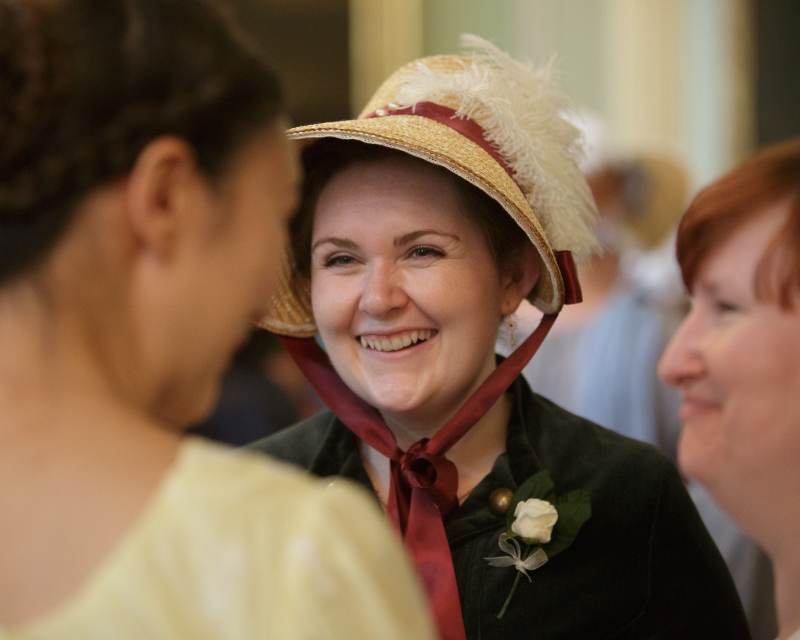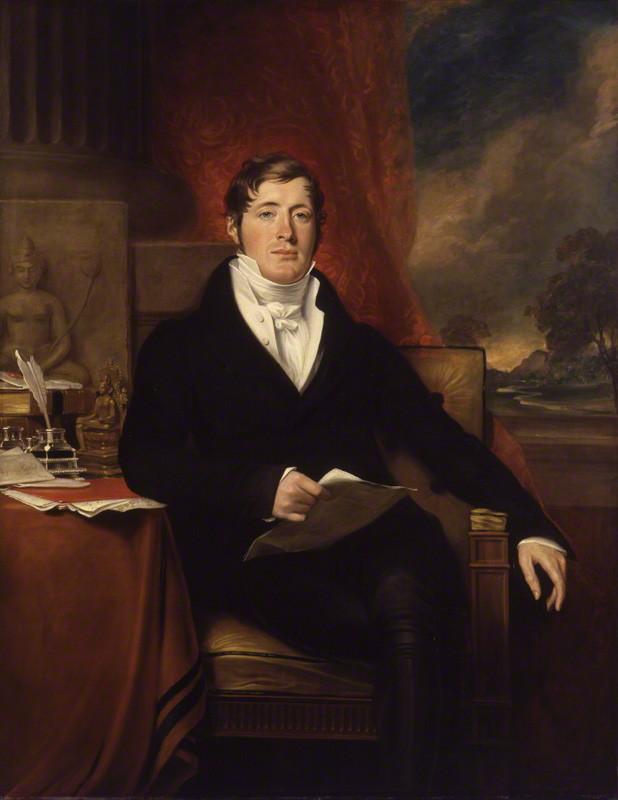
A Lady’s Education
Excerpted from The Jane Austen Handbook: A Sensible yet Elegant Guide to Her World
Most young women were educated by a combination of teachers, all working towards the ultimate goal of producing an elegant creature who would take the ton by storm—or at least escape becoming a spinster. Here are some of those responsible for her lessons:
<parents< span=""> 
In some households, a girl’s mother taught her to read and write and do basic arithmetic, and perhaps some rudimentary French. Her father also might have been involved in her instruction, particularly if he were a member of the clergy. This may have been all the formal education a young woman received, unless her parents hired a governess or sent her to school around age ten.
A Governess
A good governess taught a young lady history, geography, and languages; to write in and elegant hand; to draw, sew, and do fancy needlework; to play the pianoforte and possibly the harp; and to carry herself with confidence and elegance. The governess stayed with the family until all the young ladies of the house were married, and sometimes she remained in a family’s employ as a companion to the mother or unmarried daughters.
Masters
Visiting masters supplemented a young woman’s education with advanced instruction in music, drawing, language, and dancing. The very best masters were found in the city, but even country neighborhoods usually boasted a few masters who tended to the young ladies in the area.
<school< span="">
If her parents preferred no not engage a governess, or if a young woman was orphaned or otherwise in need of a settled place to live, a girl might have been sent away to school from age ten to around age eighteen (if she was deemed ready to make her debut in society, she could be withdrawn as much as two years earlier). Schools in London or Bath, often known as young ladies’ seminaries, tended to be more formal and fancy. A young lady educated in such an establishment could command an impressive array of accomplishments, including music, drawing, fancy needlework, and a polished and fashionable way of dressing, moving, and behaving. This polish sometimes came at the expense of the young lady’s health or gave her a falsely inflated sense of self-worth. The luckiest girls were sent to a good old-fashioned boarding school that provided a less stringent education, but from which they were more likely to emerge healthy and happy and good natured—such women could always catch up on their education with extensive reading in their father’s library.
 Margaret C. Sullivan is the author of The Jane Austen Handbook: A Sensible yet Elegant Guide to Her World, a handbook to life during the Regency. The topics covered in this book range from How to Become an Accomplished Lady to How to Run a Great House, How to Indicate Interest in a Gentleman Without Seeming Forward, How to Throw a Dinner Party and How to Choose and Buy Clothing, among others. They are written in an informative style (as to a young gentleman or lady) with examples drawn from Austen's novels and interspersed with historical information like that shown above. Each section is punctuated with original illustrations by Kathryn Rathke. A myriad of further information is included in the appendix, from a biography of Austen and summaries of each of her works, to suggested reading and helpful websites.
Margaret C. Sullivan is the author of The Jane Austen Handbook: A Sensible yet Elegant Guide to Her World, a handbook to life during the Regency. The topics covered in this book range from How to Become an Accomplished Lady to How to Run a Great House, How to Indicate Interest in a Gentleman Without Seeming Forward, How to Throw a Dinner Party and How to Choose and Buy Clothing, among others. They are written in an informative style (as to a young gentleman or lady) with examples drawn from Austen's novels and interspersed with historical information like that shown above. Each section is punctuated with original illustrations by Kathryn Rathke. A myriad of further information is included in the appendix, from a biography of Austen and summaries of each of her works, to suggested reading and helpful websites.
If you don't want to miss a beat when it comes to Jane Austen, make sure you are signed up to the Jane Austen newsletter for exclusive updates and discounts from our Online Gift Shop.
The Jane Austen Handbook is published by Quirk Books and available for purchase from Amazon
ISBN-10: 1594741719, RRP: £9.99.



Leave a comment
This site is protected by hCaptcha and the hCaptcha Privacy Policy and Terms of Service apply.